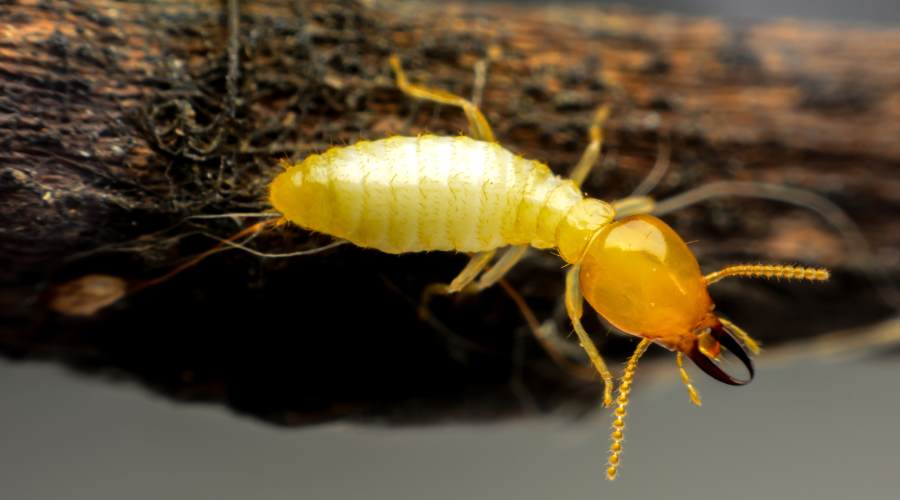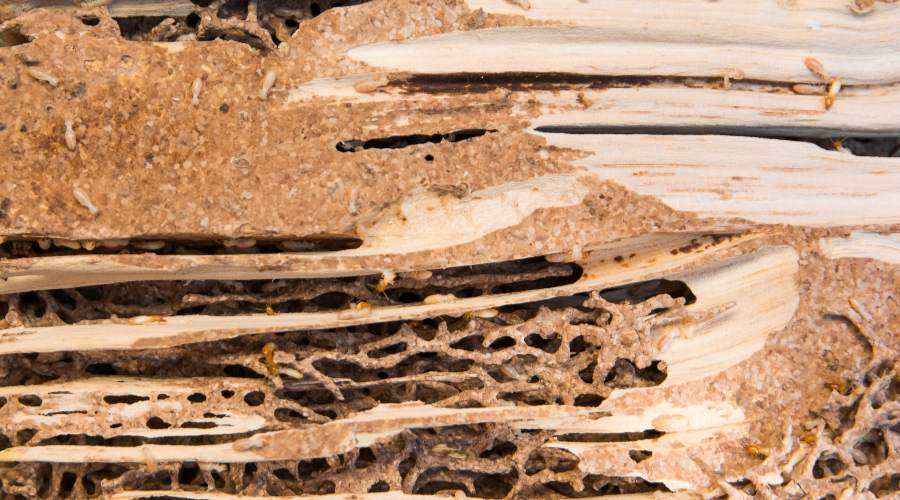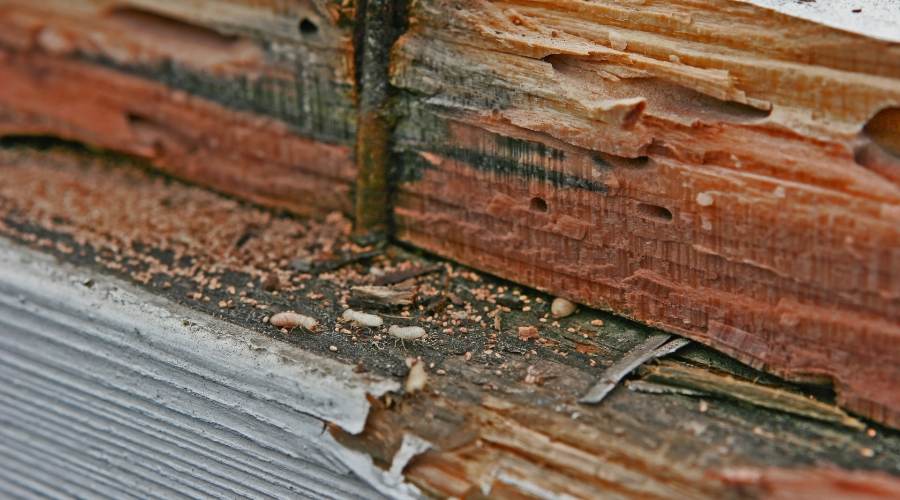Termites 101: Understanding Termite Behavior and Preventative Measures
Let’s face it, termites can be a real nuisance. One day you’re enjoying your home sweet home, the next you’re wondering what’s causing all that sawdust on the floor. Before you know it, these pesky insects have chewed through wood causing major structural damage. Not fun! The good news is that understanding termite behavior can help you prevent infestations before they start.
With a few proactive measures, you can send these pests packing. This guide will cover everything you need to know about identifying, preventing, and getting rid of termites for good.
Examining the Physical Features of Termites
First things first, how do you spot these sneaky saboteurs? Let’s look at some of the telltale signs of the most common termite species:
Characteristics of Drywood Termites
- Small with tan, brown, or black bodies
- 1/4 to 1/2 inch long
- 6 legs, beaded antennae, straight abdomen
- Chew through wood leaving behind fecal pellets
Traits of Subterranean Termites
- White, brown, or black bodies
- 1/4 to 1/2 inch long
- 6 legs, beaded antennae, broad waists
- Build mud tubes to travel into planks
Qualities of Dampwood Termites
- Creamy white bodies
- 1/4 to 1 inch long
- Large heads with straight sides
- Prefer moist, decaying lumber
As you can see, size and color can vary but all species have key common characteristics like 6 legs and beaded antennae. Signs of infestation also differ between groups.
Identifying a Termite Swarmer
Seeing flying insects emerging in your home during springtime can be alarming. But before panicking about a termite takeover, closer inspection can confirm if they are actually reproductive termite swarmers. Indications include:
- Four long, evenly sized wings of equal length
- Straight antennae with beaded appearance
- Broad waistline between thorax and abdomen
- Two pairs of long legs
- Dark color, often black or brown
Termites swarmers will shed their wings after landing to search for a mate and new nesting site. If the winged insect in question doesn’t match the description of a reproductive termite, it’s likely a flying ant or other winged insects.
Types Of Termites
Termites are broadly grouped into two categories based on their nesting habits:
Subterranean Termites
As the name suggests, these termites nest underground and tunnel up into structures to feed on timber. Because they need contact with loam, subterranean termites are most likely to enter homes through the foundation.
Drywood Termites
Drywood colonies live inside seasoned log without any contact with dirt. Infestations often start in attics or wall voids then spread from there. Their fecal pellets are a good indicator of activity.
There are also dampwood termites that infest moist, decaying planks and foraging groups that have no fixed nest. Identifying what type is in your home will help guide treatment.
Eradicating an Infestation
When termites sneak their way into your space, you want to get rid of them ASAP before major damage sets in. Here are common options for saying bye bye to these ruinous invaders:
Termite Inspection
To catch termite activity early, a thorough inspection by a pest management professional is recommended annually. A proper termite inspection will include:
- Checking both the interior and exterior of your home, including attics, basements and crawlspaces.
- Looking along the foundation and entry points like plumbing and utility lines for mud tubes.
- Tapping wood to listen for hollow areas indicating damage.
- Inspecting insulation, flooring, walls and wooden structures for tunnels.
- Moisture meter readings around any water sources like AC units or pipes.
- Removing covers to check bath traps, junction boxes and other hidden spaces.
Inspections using a bright flashlight, moisture meter, ladder and probe can thoroughly cover all areas vulnerable to termite access or damage. This helps detect early marks before major destruction occurs.
Where to Inspect for Termites
Termites are masters at staying hidden, so check in these common trouble spots:
- Wood sidings, trim, decks – inspect closely for mud tubes running up surfaces
- Foundations – check for cracks or soft areas
- Attics – look along rafters, insulation and floors for indications
- Basements – examine support beams and posts
- Crawl spaces – inspect thoroughly including ductwork and plumbing
- Window frames – open up to check sills, channels and openings
Also examine areas with excess moisture like under sinks, near AC units and around plumbing fixtures. Tap wood to listen for hollow areas indicating termite damage. Being thorough from roof to foundation gives termites nowhere to hide.
Using Liquid Insecticides
Fast-acting insecticides can kill termites on contact and provide residual control. Opt for a product labeled for infestations, not general pest control. Professional treatment typically involves trenching and drilling to soak infested spots.
Utilising Baits
Termite bait stations lure termites in with a tasty treat then take them out with a delayed toxicant. Using this tactic, worker termites unknowingly spread the poison back to their colony. It may take a few weeks but baits aim to eliminate the entire nest.
Heat Treatments
Heating infested areas above 120°F kills termites without using any chemicals. Professional heat treatments involve tenting the home then pumping it full of heated air for termite extermination.
Replacing Damaged Wood
If the damage is confined to a small area, simply replacing termite-damaged boards and beams can solve the problem. This works best in combination with other methods to kill off the colony.
The takeaway is there are several options to knock out termite troubles. The key is contacting a pest management pro to identify extent of infestation and recommend a tailored plan of attack.
What attracts termites to your home?
When scoping out a home to infest, termites hone in on a few key features that make for an ideal nesting habitat:
- Wood sources – Siding, framing, fencing and landscaping mulch offer termites their main food source.
- Moisture – Leaky pipes, high humidity and damp sod attract termite colonies searching for water.
- Shelter – Shaded areas and access to crawlspaces or wall voids provide protection.
- Warmth – The ambient temperatures around your home’s foundation are appealing.
Taking away these desirable conditions goes a long way toward making your home termite-resistant. Proper drainage, ventilation, removing wood debris and sealing cracks shut off easy access and resources.
Clues that Termites are Present
Keep an eye out for these common signs of termite activity in your home:
- Hollowed out wood
- Mud tubes along foundations
- Discarded wings (termites swarm seasonally)
- Pile of fecal pellets
- Crumbling drywall
- Sawdust around baseboards or flooring
Act promptly if any of these termite clues pop up. Early detection gives you the best odds of getting a minor infestation under control before major damage occurs.
Scenarios Not Leading to Infestation
Seeing evidence of termites does not necessarily mean your home is doomed to a full-blown infestation. Here are some scenarios that may not warrant panic:
- Just 1-2 swarmers spotted inside
- Mud tubes only visible in crawl space area
- Minimal sawdust or other evidence of activity
- Damage confined to detached wooden elements
While any termite presence merits inspection and ongoing prevention, a minor detection does not always lead to major infestation. If the activity appears limited, non-chemical measures like removing conducive conditions may be enough to avoid a major termite problem from developing.
Prevention Tips
An ounce of prevention is worth a pound of termite-ridding cure. Keep these pro tips in mind to knock out termites before they’ve even sampled your woodwork:
- Direct water away from home. Moisture attracts termites so ensure proper drainage around your home’s foundation.
- Ventilate wet areas. Avoid excess humidity by running bathroom and kitchen fans and having crawl spaces open to air flow.
- Mulch wisely. Timber chip and straw mulch hold moisture, inviting termites. Use rock or rubber instead.
- Eliminate direct contact. Stack firewood and scrap lumber off the ground and away from your home.
- Make repairs. Fix leaky plumbing and replace damp around your home’s exterior.
- Install barriers. Sand or steel mesh can block type of termite from crawling up from earth into planks.
Taking away basic necessities like moisture and log access sends a clear message to termites that your home is not open for business!
When to Call for Professional Help
DIY termite control has its limits. Reach out to a professional pest control company in these situations:
- You spot swarmers emerging inside your home.
- Mud tubes are visible on foundation walls or pier posts.
- There are hints of extensive damage like sagging floors.
- You are unsure of what species of termite you are dealing with.
- An infestation appears to be spreading despite your efforts.
- You want to take preventive measures like a bait system or soil treatment.
Technicians have the proper tools and training to:
- Pinpoint the colony location.
- Identify the species.
- Determine the extent of the infestation.
- Access hard-to-reach areas.
- Apply specialised treatments like termiticides.
At the first signal of major termite issues, bring in the big guns of professional control for effective elimination and prevention.
Commonly Asked Questions
What attracts termites?
Termites are drawn to moisture, wood spring, and warm temperatures. Leaky plumbing, mulch, and crawl space access can make your home a tasty termite target.
What do termites hate?
Termites steer clear of sunlight and open air circulation. Removing debris near your home’s foundation and ventilating damp areas helps make the environment less termite friendly.
Do termites fly?
During spring swarming season, termites with wings emerge to search for mates and a new place to nest. Seeing flying termites near your home likely means there’s a colony nearby.
What kills termites instantly?
Liquid termiticides drench infested areas, killing termites on contact. Baits and heat treatment work more slowly, targeting the entire colony over time.
How do you stop termites from coming back?
Prevent termite recurrence with ongoing prevention measures like fixing moisture issues, removing wood debris, and having annual professional inspections.
Expert Advice
Here is an inside scoop for gaining the upper hand against termites:
- Get on a regular inspection schedule at least once per year.
- Keep the exterior area around your home’s foundation clear of pileup and clutter.
- Listen for hollow and tapping noises which can indicate activity.
- Mark current extent of mud tunnels to gauge any new additions.
- Keep your property well-lit and with proper ventilation to deter these light-avoiding nuisance.
Staying vigilant through scheduled monitoring, reducing conducive conditions and knowing the subtle mark of termite infestation will give you an advantage in prevention and early detection.
Conclusion
While termite invasions can be upsetting, understanding basic termite behavior helps you prevent and control future infestations. Keep an eye out for evidence like discarded wings and mud tubes. Eliminate conducive conditions like excess moisture and wood contact around your home’s exterior. If destructive pests sneak in anyway, take action right away. Termite treatment options include liquid applications, baits, heat, and wood replacement to knock out termites and prevent costly damage to your home’s structure.





